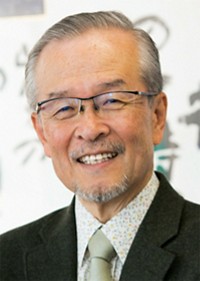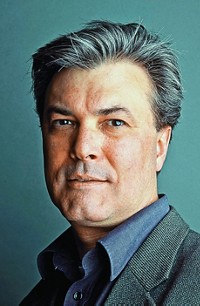Advertisement
Grab your lab coat. Let's get started
Welcome!
Welcome!
Create an account below to get 6 C&EN articles per month, receive newsletters and more - all free.
It seems this is your first time logging in online. Please enter the following information to continue.
As an ACS member you automatically get access to this site. All we need is few more details to create your reading experience.
Not you? Sign in with a different account.
Not you? Sign in with a different account.
ERROR 1
ERROR 1
ERROR 2
ERROR 2
ERROR 2
ERROR 2
ERROR 2
Password and Confirm password must match.
If you have an ACS member number, please enter it here so we can link this account to your membership. (optional)
ERROR 2
ACS values your privacy. By submitting your information, you are gaining access to C&EN and subscribing to our weekly newsletter. We use the information you provide to make your reading experience better, and we will never sell your data to third party members.
Synthesis
Arthur C. Cope Scholar: Jack R. Norton
by Susan R. Morrissey
March 4, 2013
| A version of this story appeared in
Volume 91, Issue 9
Columbia University chemistry professor Jack R. Norton has made a career of catalysis research that spans inorganic and organic chemistry. Much of his work has involved the dynamics of organometallic reactions.
Norton, 67, is being honored for his impact on organic chemistry. “One is always grateful for the recognition conveyed by an award, but the Cope Scholar Award is particularly welcome as it comes from the organic community to an organometallic group,” he says.
“Jack approaches science from a deeply analytical perspective and brings his insight to bear on important problems, providing not only profound mechanistic understanding, but also powerful intuition,” says Samuel J. Danishefsky of Memorial Sloan-Kettering Cancer Center and Columbia University. This award is “a wonderful statement of the evolution of organometallic chemistry and its impact on a variety of cognate fields,” says Danishefsky, a leading organic chemist.
Of his work, Norton explains: “We have explored the ways in which transition-metal hydride complexes can interact with organic substrates. We have helped work out the rules that govern proton transfer, hydrogen atom transfer, and hydride transfer and have shown that all these reactions can be useful to organic chemists.”
Among the active areas of research in the Norton lab is the study of ionic hydrogenation—the transfer of protons and hydride ions from H2 in separate steps. The Norton group has shown that half-sandwich Ru(II) hydride complexes catalyze the hydrogenation of iminium, pyridinium, and aziridinium cations in this way. They are attempting to develop ionic hydrogenation catalysts that are enantioselective.
The Norton group has also shown that cyclic carbonates and carbodiimides can insert into the Zr–C bonds of zirconaaziridines, giving amino acid esters and α-amino amidines. When the insertion reagents are enantiopure, these reactions become dynamic kinetic asymmetric transformations, meaning they convert a racemic starting material into a diastereoenriched product. The Norton lab has studied the rates at which zirconaaziridine enantiomers interconvert.
They have also explored the mechanisms of the carboalumination of α-olefins and of the catalysis by Zr of ethylene uptake by organoaluminums. Recently they have devised nontoxic, Sn-free catalysts for effecting radical cyclizations under hydrogen gas; the radicals are generated by H• transfer from the catalysts to appropriate dienes.
California Institute of Technology chemistry professor and Nobel Laureate Robert H. Grubbs notes, “Jack Norton has helped us understand many organometallic reactions that are important in catalysis.”
Norton earned a B.A. from Harvard University in 1967 and a Ph.D. from Stanford University in 1972, both in chemistry. After a postdoc at the University Chemical Laboratory in Cambridge, England, he joined the faculty of Princeton University. He moved in 1979 to Colorado State University, where he stayed until assuming his current position in 1997. He received the ACS Award in Organometallic Chemistry in 2005 and was an associate editor for the Journal of the American Chemical Society from 1992 to 2003.






Join the conversation
Contact the reporter
Submit a Letter to the Editor for publication
Engage with us on Twitter